|
Wetland and Aquatic Plants
of
Oklahoma
Interactive Keys: Emergent
White Flowers
5.
Flower with 5 Petals
a. Parsnips (Apiaceae)
b. Borages
(Boraginaceae)
c. Morning-glory (Convolvulaceae)
d. Stonecrops (Crassulaceae)
e.
Sundews (Droseraceae)
f. Waterworts (Elatinaceae)
g. Logania
(Loganiaceae)
h. Mallows
(Malvaceae)
i. Carpetweeds (Molluginaceae)
j. Primroses (Primulaceae)
k. Saxifrages (Saxifragaceae)
l. Snapdragons
(Schrophulariaceae)
Parsnips (Apiaceae)
Cutleaf
waterparsnip (Berula erecta
(Huds.) Coville)
Native perennial
Click thumbnails to enlarge
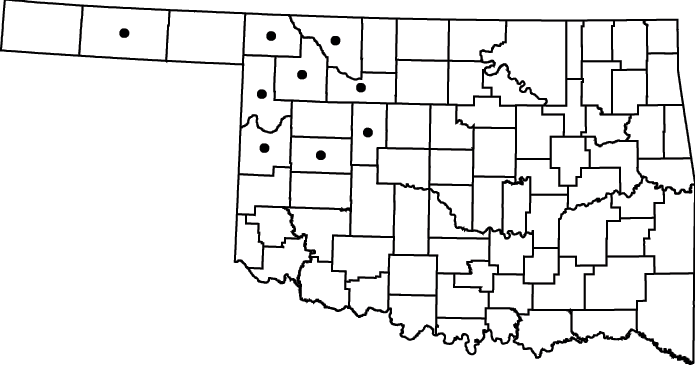
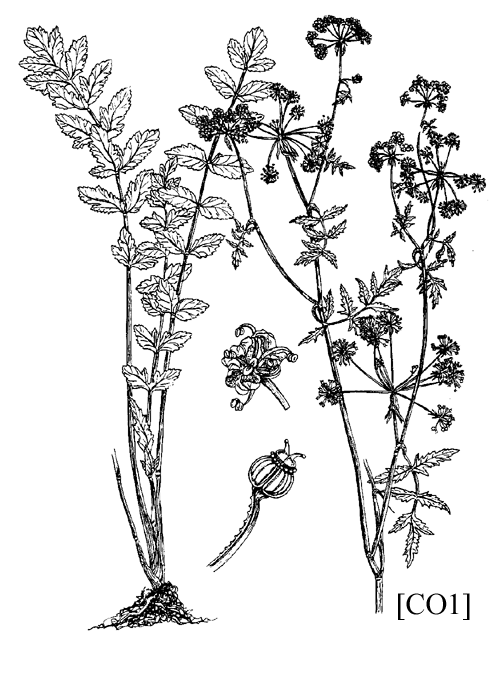
NWI status:
OBL.
Spotted
water hemlock (Cicuta maculata
L.)
Native perennial.
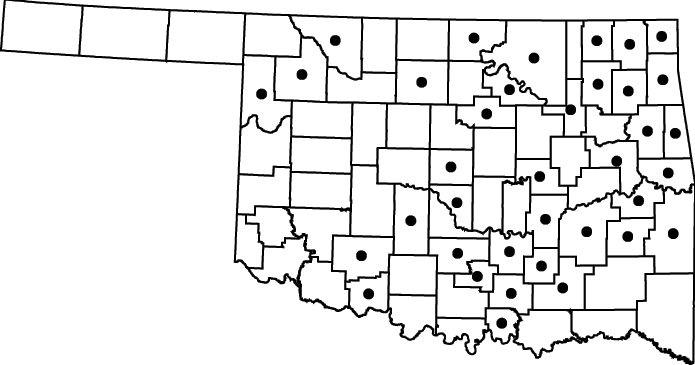
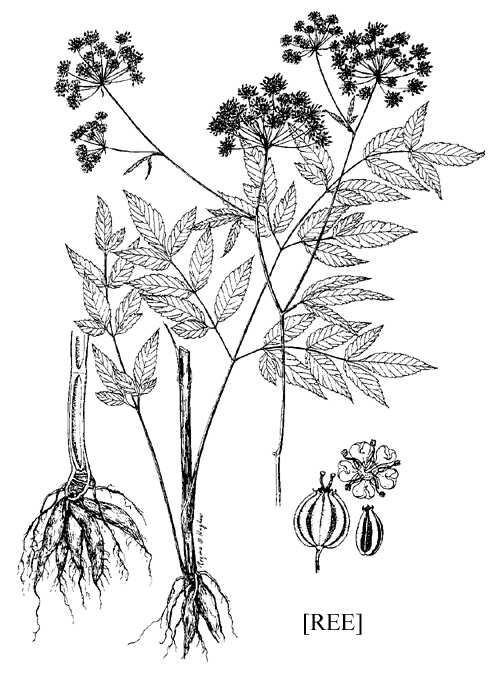
Note: An extremely toxic plant.
The poison is cicutoxin, a neurotoxin, which is
concentrated in
the root, but can be found in lower quantities throughout.
Nonetheless, black swallowtails use this
plant as a larval food.
NWI status:
OBL.
Poison
hemlock (Conium
maculatum L.)
Introduced biennial.
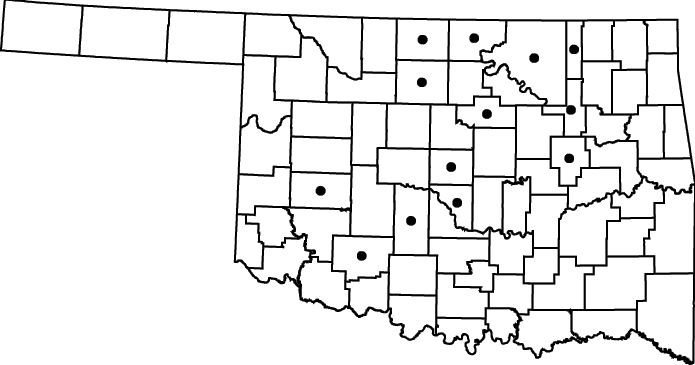
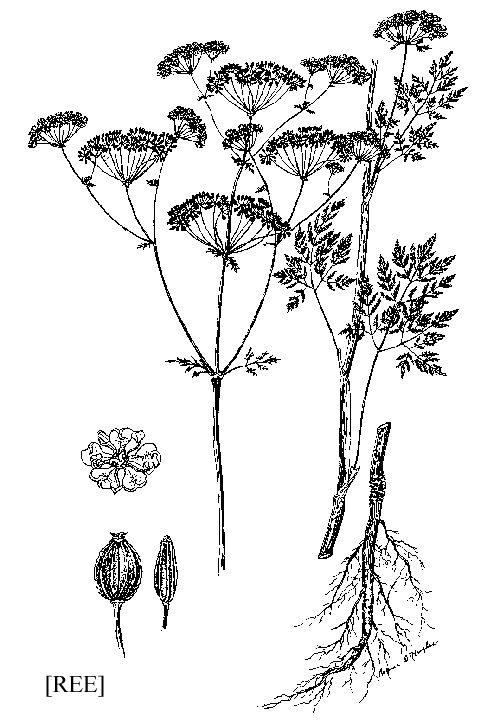
Note: An extremely toxic plant.
The poison is cicutoxin, a neurotoxin, which is
concentrated in
the root, but can be found in lower quantities throughout.
Nonetheless, black swallowtails use this
plant as a larval food.
NWI status:
FACW
Finger
dogshade (Cynosciadium digitatum
DC.)
Native annual.
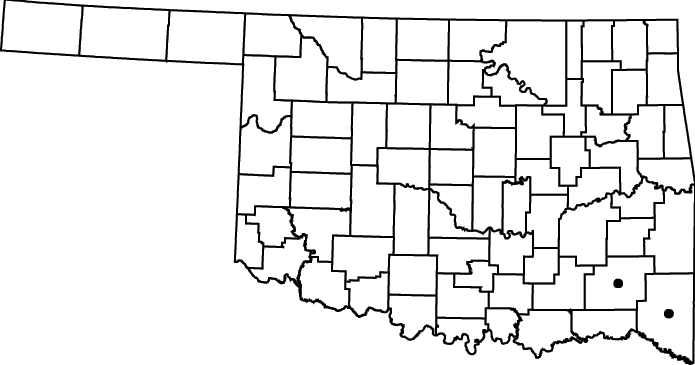
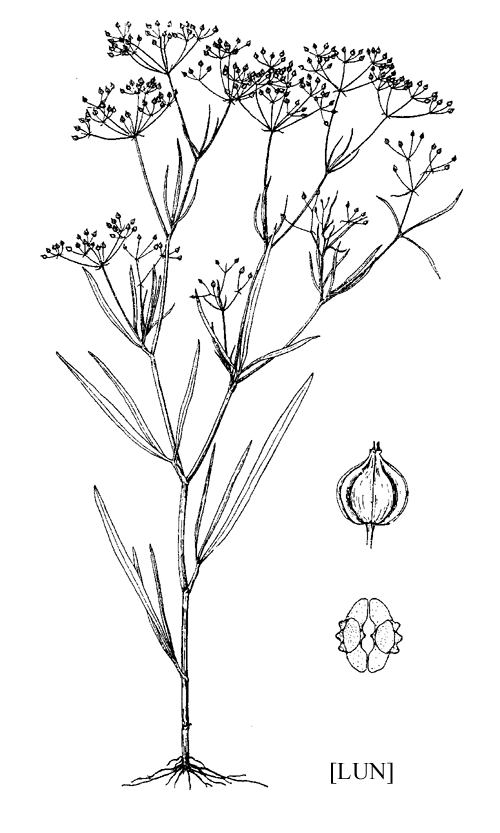
NWI status:
FACW
Pennyworts
(Hydrocotyle
spp.)
Note: Observe the difference in leaf lobing and
attachment
point for the leaf stalk (petiole) when identifying these species. The seeds and foliage of pennyworts are
consumed by waterfowl and shorebirds.
NWI status:
All pennyworts are designated as OBL.
Umbrella
pennywort (Hydrocotyle umbellata
L.)
Native perennial.
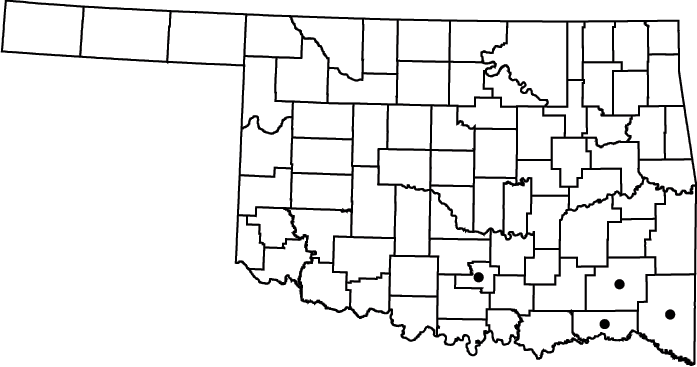
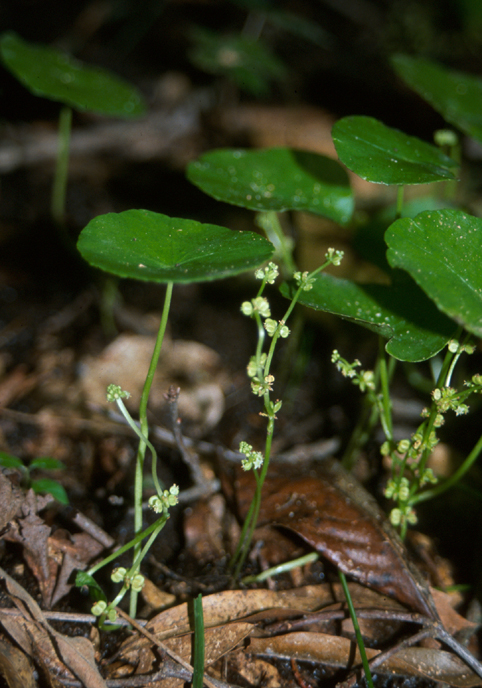
Floating
pennywort (Hydrocotyle
ranunculoides
L. f.)
Native perennial.
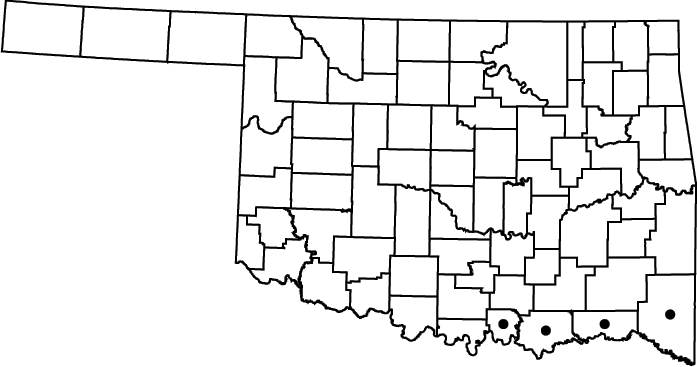
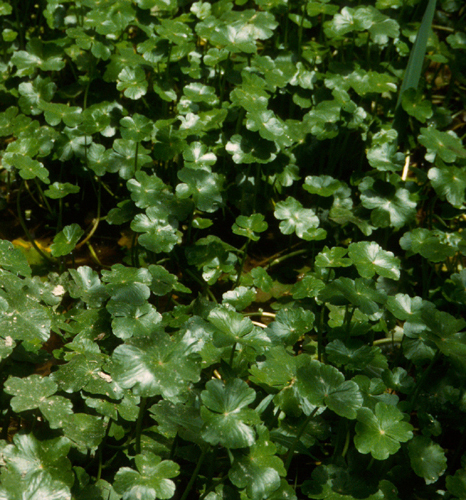
Whorled
pennywort (Hydrocotyle verticillata
Thunb.)
Native perennial.
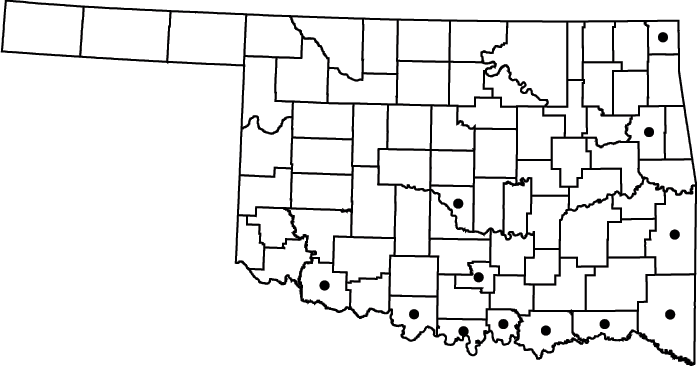
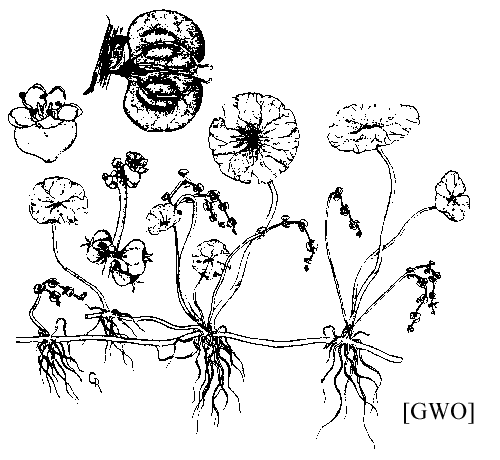
Tansy
dogshade (Limnosciadium sp.)
Tansy
dogshade (Limnosciadium
pinnatum (DC.) Mathias & Constance)
Native annual.
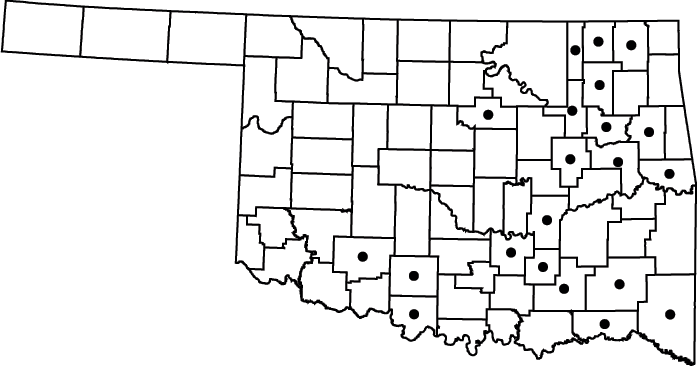
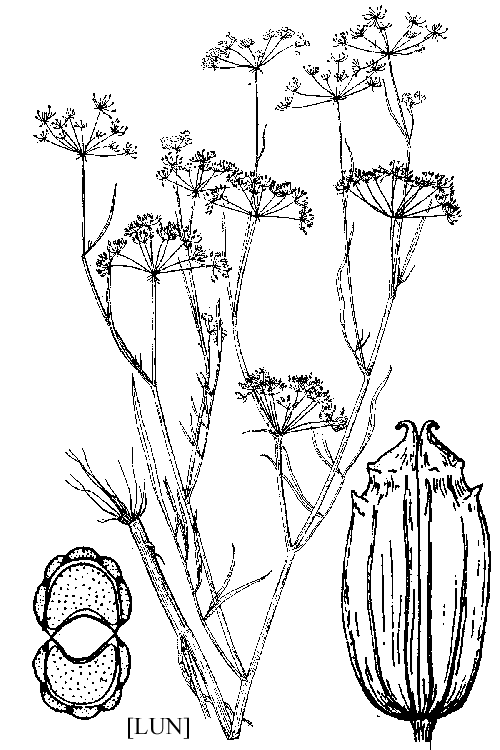
NWI status:
FACW-
Ribbed
mock bishopweed (Ptilimnium costatum
(Ell.) Raf.)
Native annual.
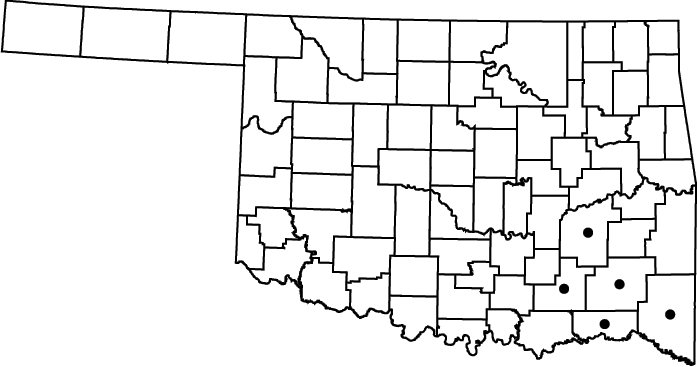
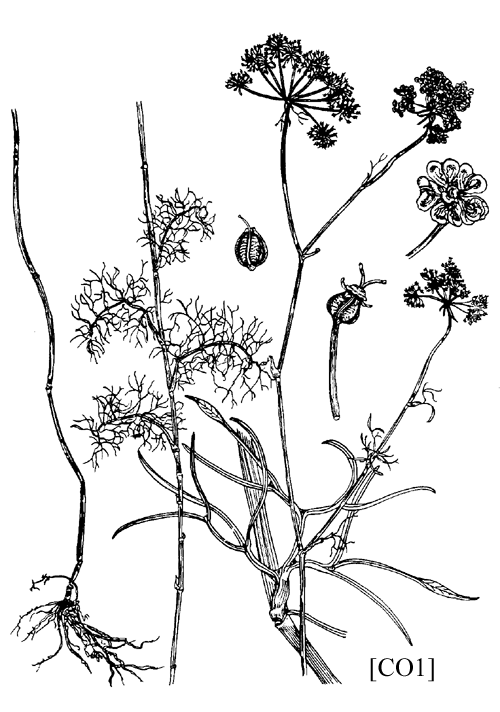
Note: Leaf divisions, or segments, in whorls.
NWI status:
FACW
Threadlead
mockbishopweed (Ptilimnium
capillaceum (Michx.) Raf.)
Native
annual.
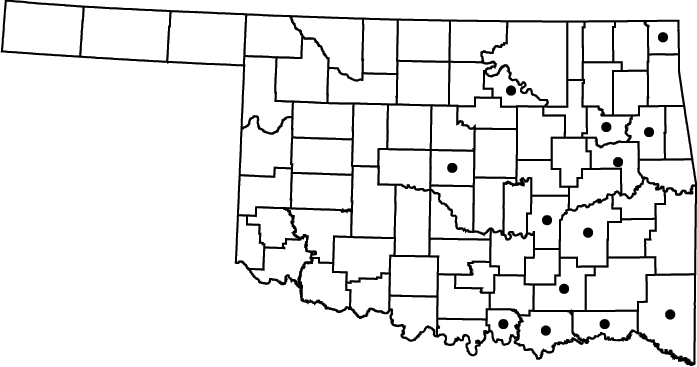
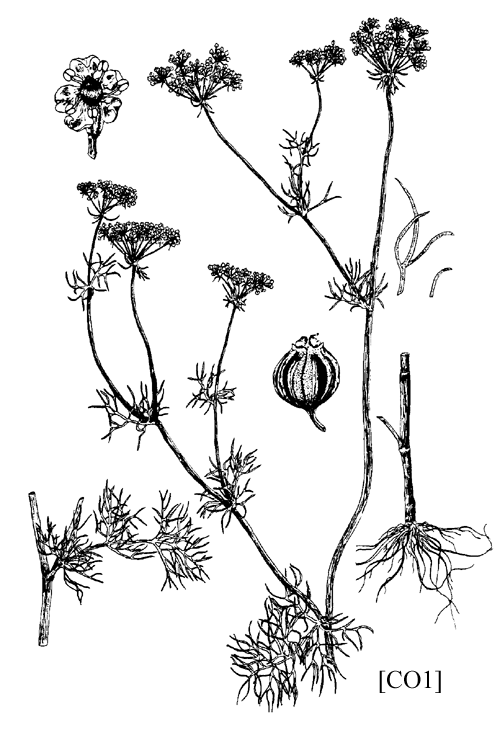
Note: Leaf divisions, or segments, alternating.
NWI status:
OBL
Cowbane (Oxypolis sp.)
Stiff
cowbane (Oxypolis
rigidior (L.) Raf.)
Native
perennial.
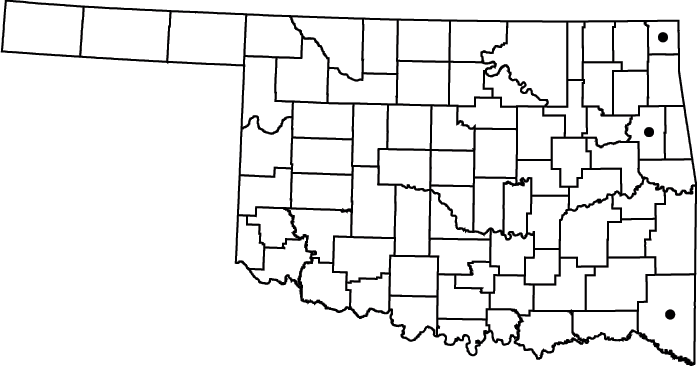
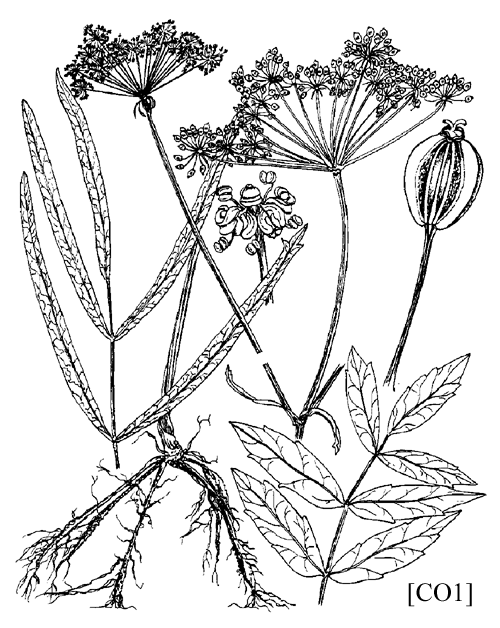
Note: The roots were baked by some tribes.
NWI status:
OBL
Borages
(Boraginaceae)
Note:
the flowers in this family are tubular with five lobes.
Salt
heliotrope (Heliotropium
curassavicum L.)
Native annual.
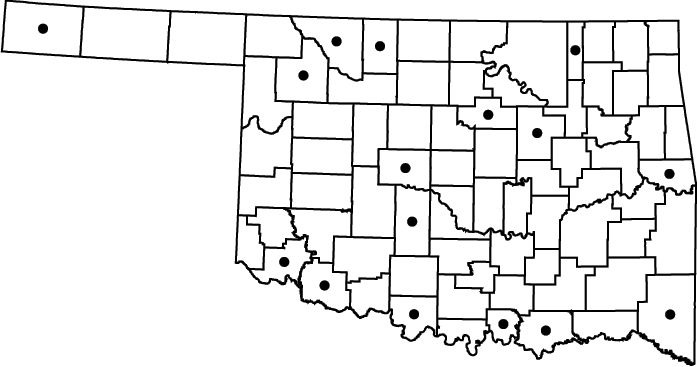
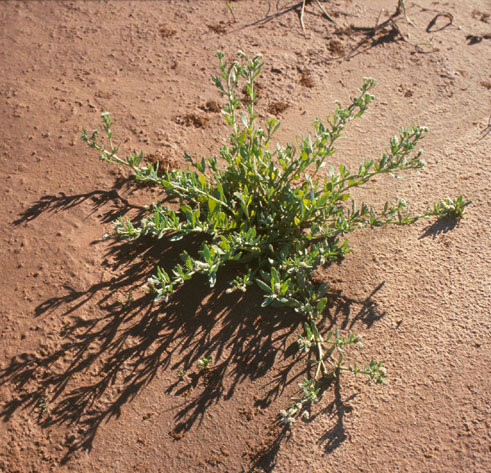
Note: leaves are thick and fleshy woth a silvery
cast.
NWI
status: OBL
Fourspike
heliotrope (Heliotropium procumbens
P. Mill.)
Native perennial.
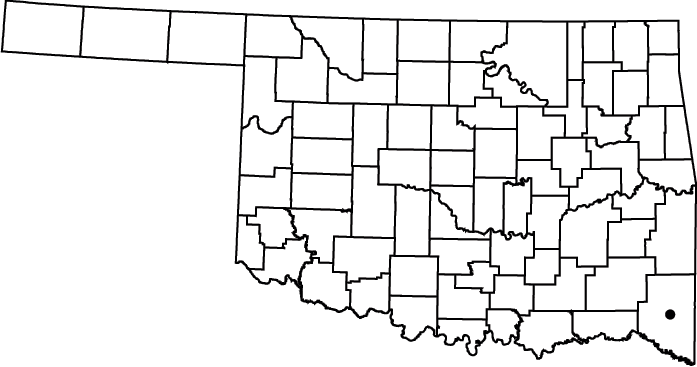
NWI status:
FACW
Morning-glory
(Convolvulaceae)
Spreading
alkaliweed (Cressa truxillensis
Kunth)
Native perennial.
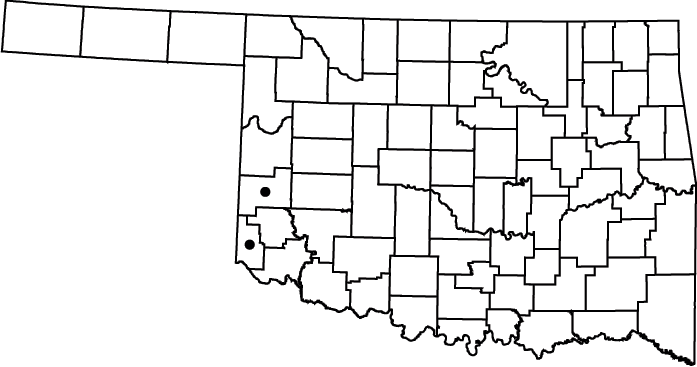
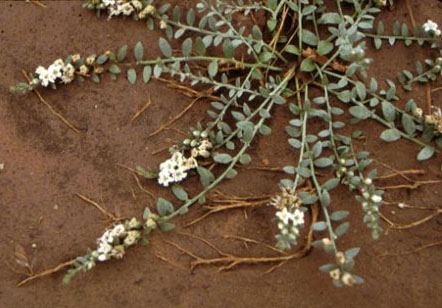
Note: This plant has is rarely encountered and has
only
been collected three time in Oklahoma.
NWI status:
FACW
Stonecrops (Crassulaceae)
Ditch
stonecrop (Penthorum sedoides L.)
Native perennial.
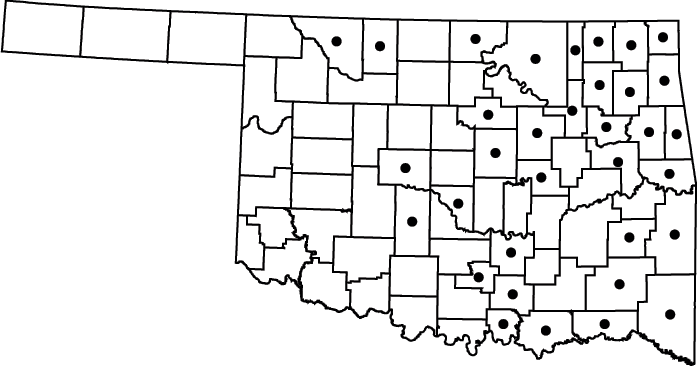
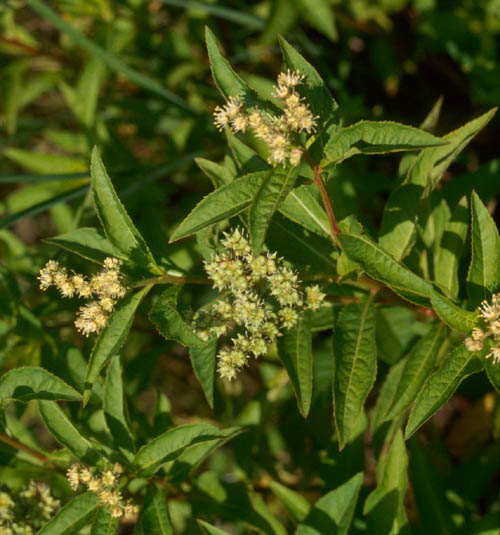
Note: Calyx lobes 5 to 7. Used
as a potherb by the Cherokee.
NWI status:
OBL
Sundews (Droseraceae)
Annual
sundew (Drosera
annua E.L.
Reed)
Native annual.
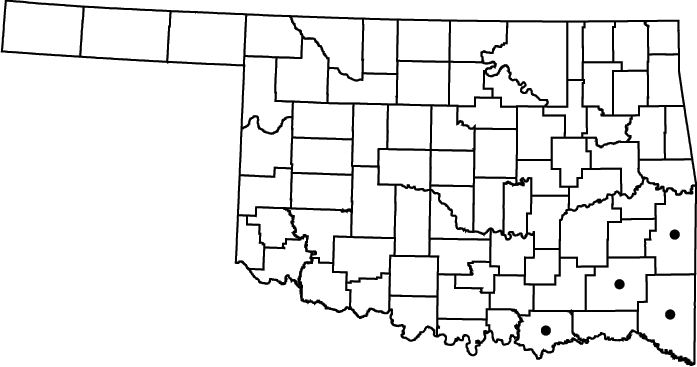
Note: This is a carnivorous species which traps
insects on
a sticky substance secreted by glands on the leaves.
NWI status:
OBL
Waterworts (Elantinaceae)
Texas
bergia (Bergia
texana (Hook.)
Seub.
ex Walp.)
Native perennial.
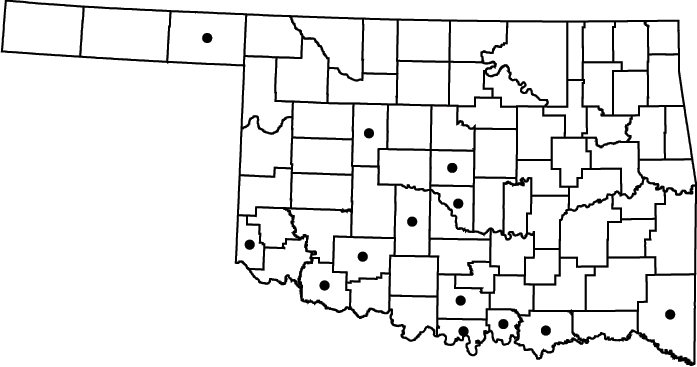
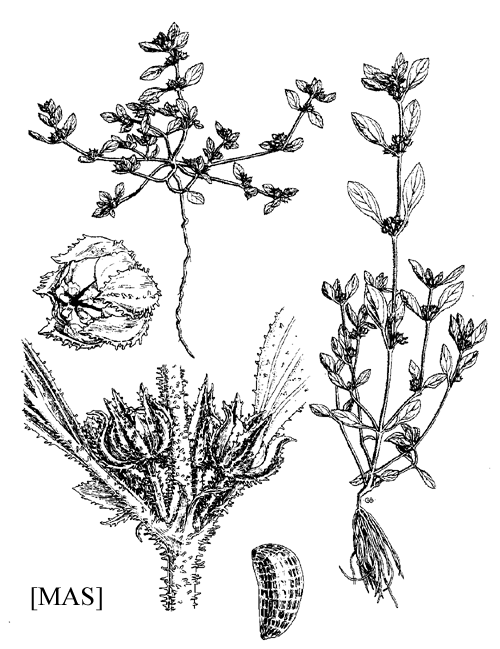
Note: This plant is upright and covered in
glandular hairs.
NWI status:
OBL
Logania (Loganiaceae)
Lax
hornpod (Mitreola petiolata
(J.F.
Gmel.) Torr. & Gray)
Native annual.
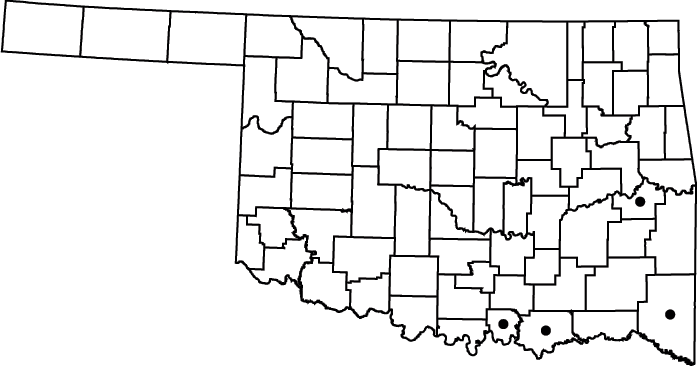
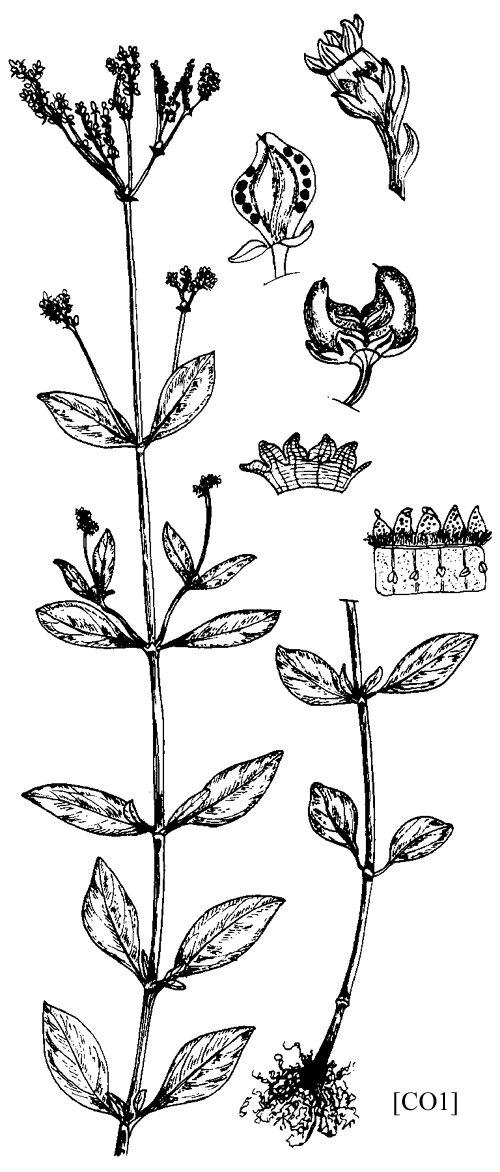
Note: Leaves with stems (petioles).
NWI status:
FACW
Swamp
hornpod (Mitreola
sessilifolia (J.F. Gmel.) G. Don)
Native annual.

Note: Leaves without stems (petioles).
NWI status:
FACW+
Mallows (Malvaceae)
Halberdleaf
rosemallow (Hibiscus
laevis All.)
Native perennial.
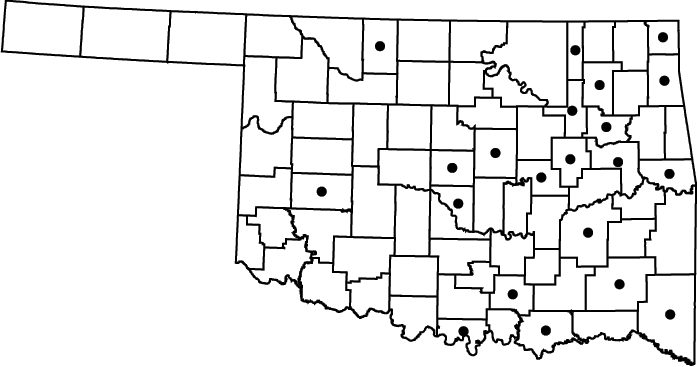
Note: A beautiful plant for both the water and
regular
gardens. Seeds eaten by some birds.
NWI status:
OBL
Rosemallow
(Hibiscus
moscheutos L.)
Native perennial.
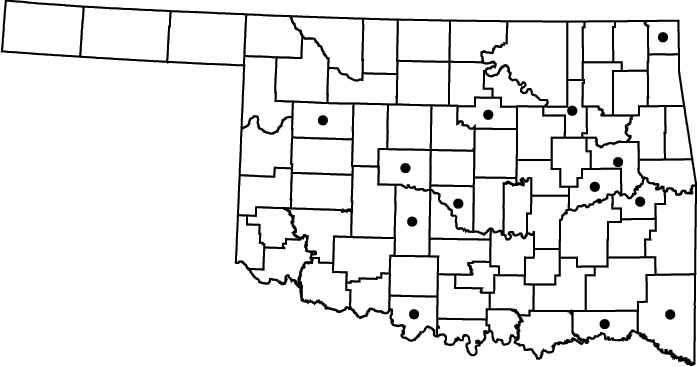
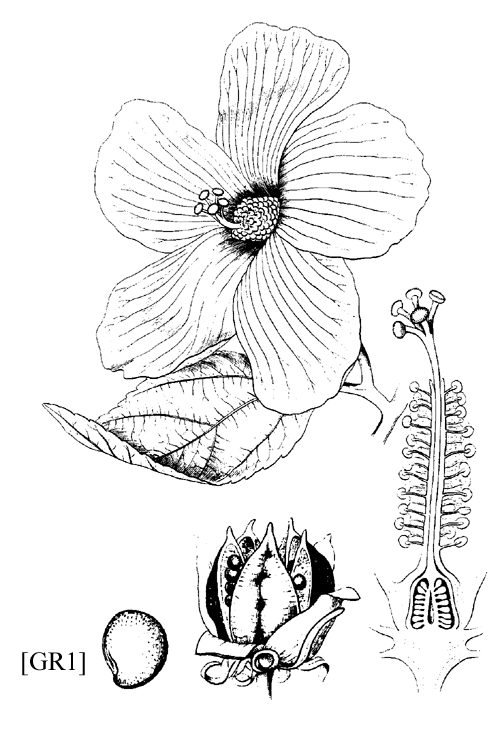
Note: A beautiful plant for both the water and
regular
gardens. Seeds eaten by some birds.
NWI status:
OBL
Carpet weeds (Molluginaceae)
Glinus
(Glinus
radiatus (Ruiz &
Pavón) Rohrb.)
Native annual.
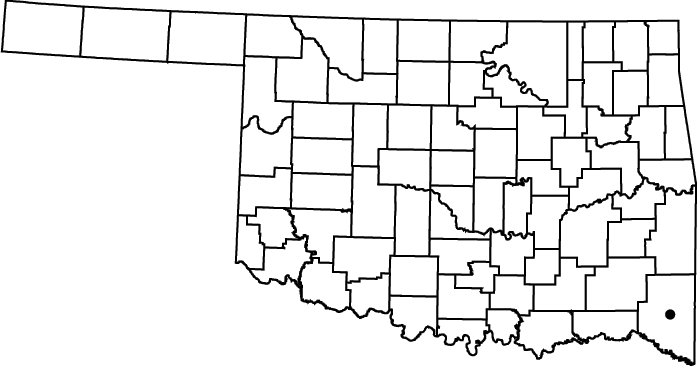
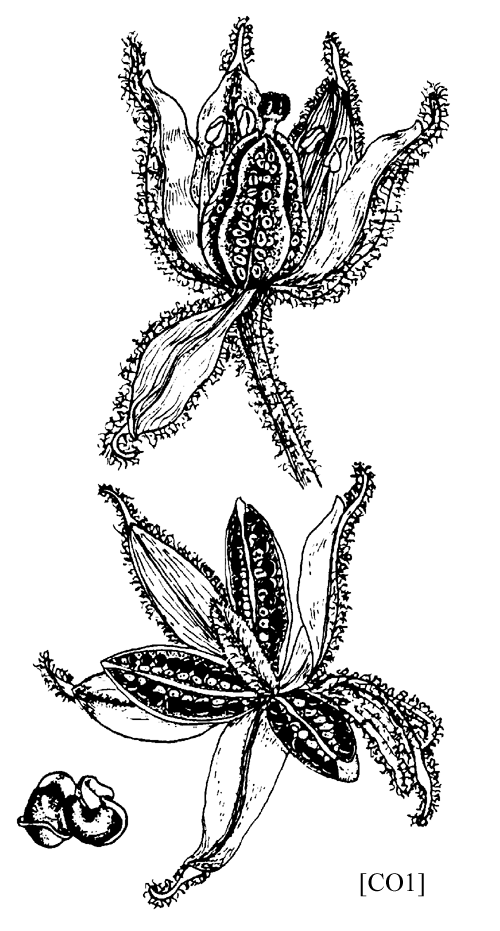
Note: This plant is typically appears in lake and
pond
drawdown areas.
NWI status:
FACW
Primroses (Primulaceae)
Seaside
brookweed (Samolus valerandi
L.)
Native perennial.
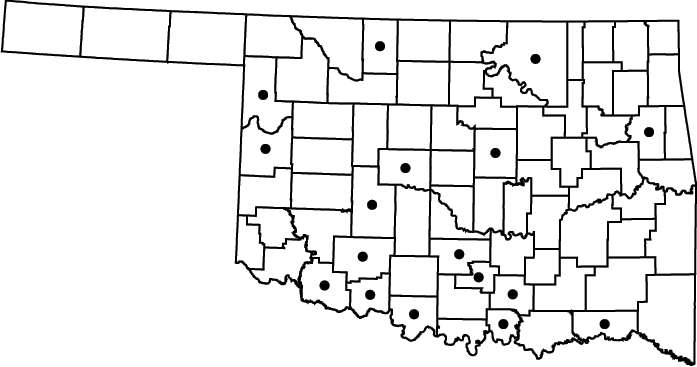
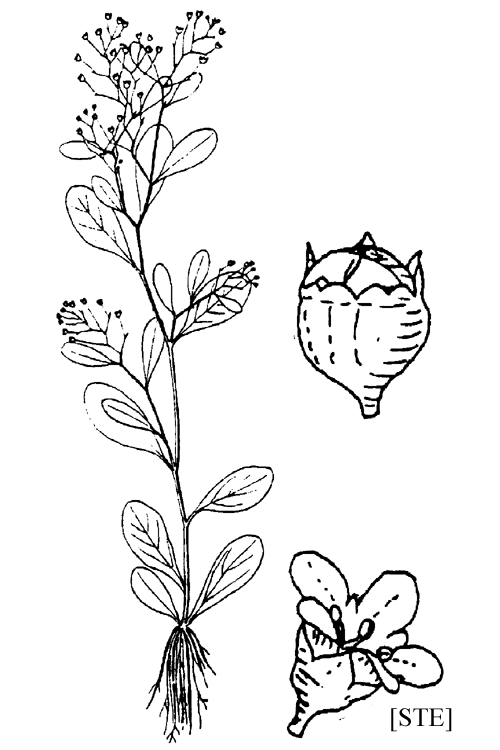
NWI status:
OBL
Limewater
brookweed (Samolus ebracteatus
Kunth)
Native perennial.
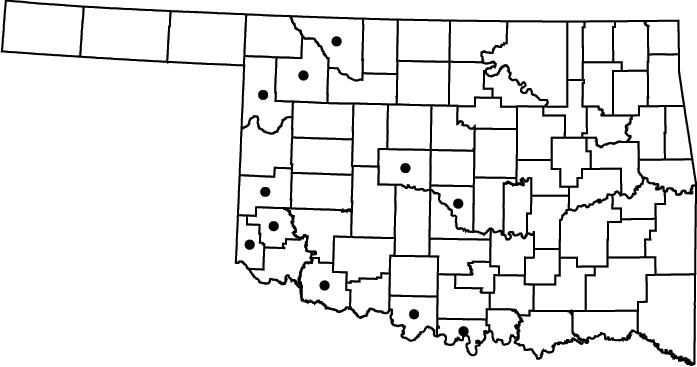
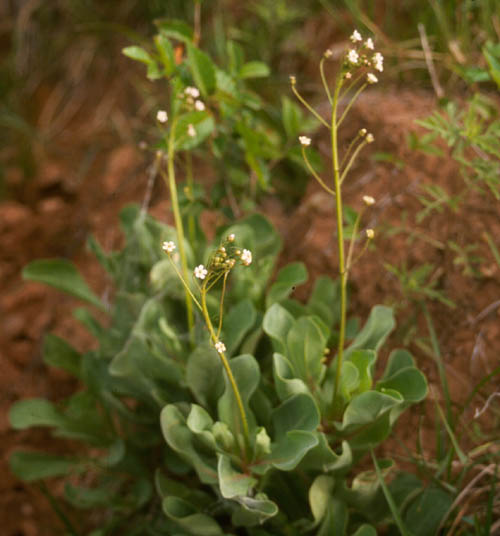
NWI status:
OBL
American
featherfoil (Hottonia
inflata
Ell.)
Native annual.
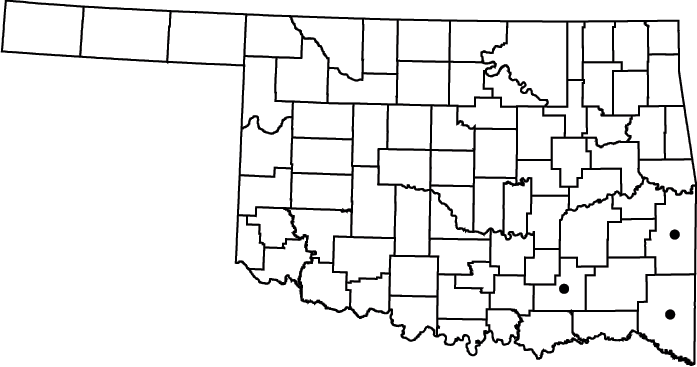
Note: An unusual member of the primrose family. Has some potential in the water garden, if
seeds can be found.
NWI status:
OBL
Saxifrages (Saxifragaceae)
Grass
of Parnassus (Parnassia
grandifolia DC.)
Native perennial.
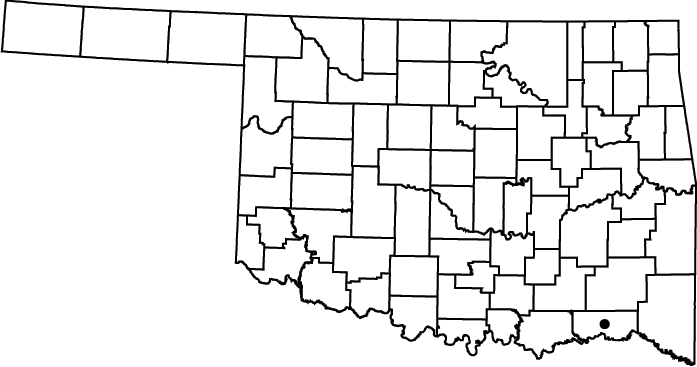
NWI status:
OBL
Snapdragons (Scrophulariaceae)
Waterhyssop
(Bacopa
rotundifolia (Michx.)
Wettst.)
Native perennial.
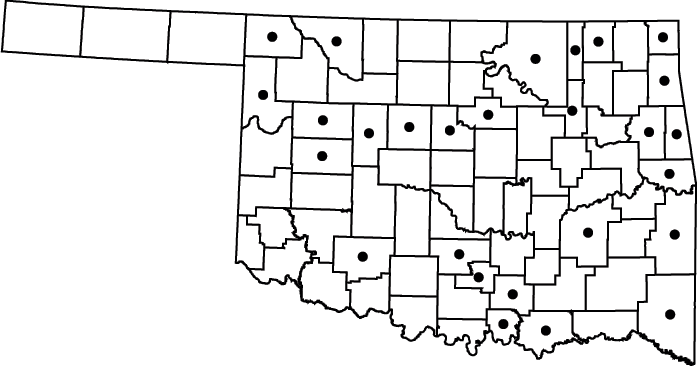
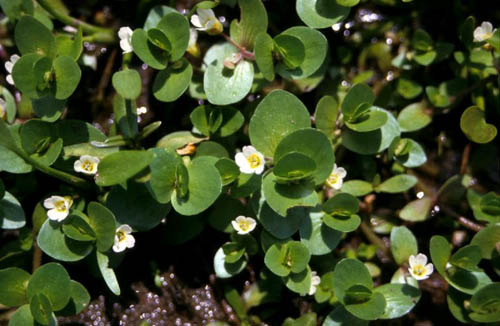
NWI status:
OBL
Yellowseed
false pimpernel (Lindernia dubia
(L.) Pennell)
Native annual.
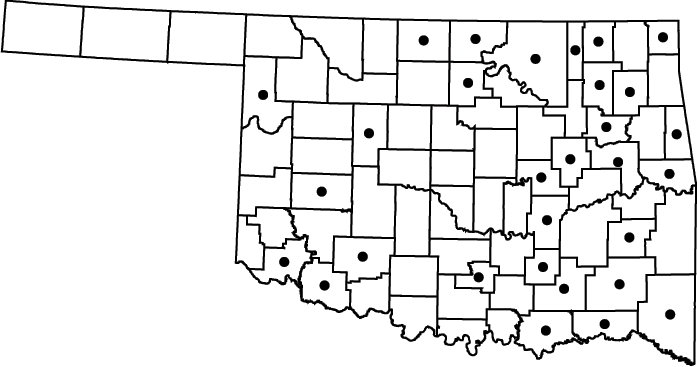
NWI status:
OBL
Clasping
false pimpernel (Lindernia
anagallidea (Michx.) Pennell)
Native annual.
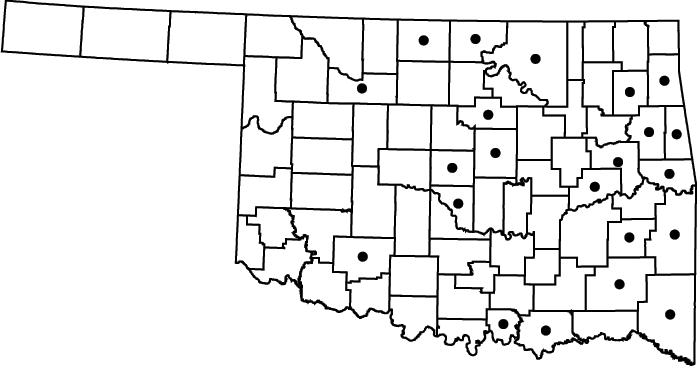
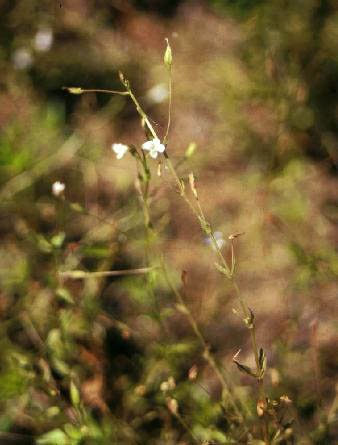
NWI status:
FACW+
Sticky
hedgehyssop (Gratiola brevifolia
Raf.)
Native annual.
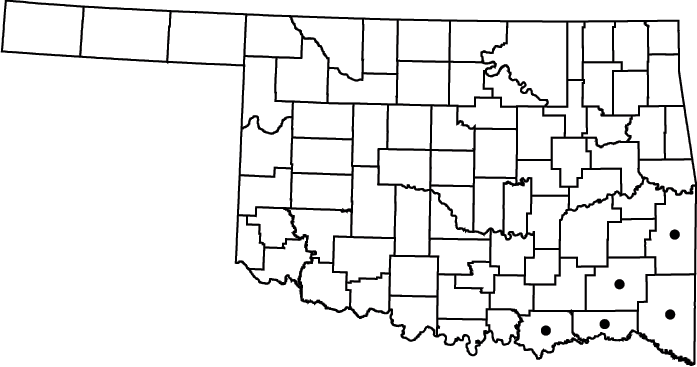
NWI status:
FACW+
Clammy
hedgehyssop (Gratiola neglecta
Torr.)
Native annual.
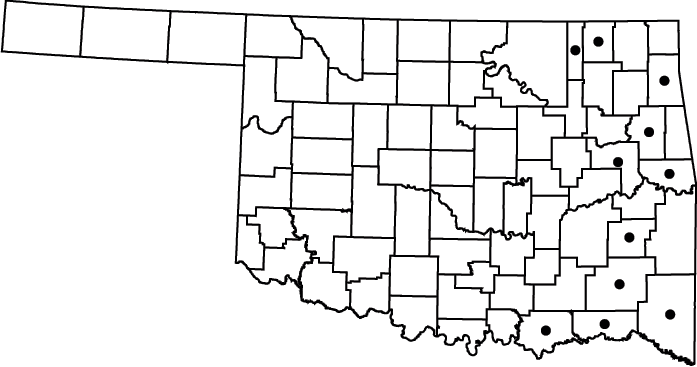
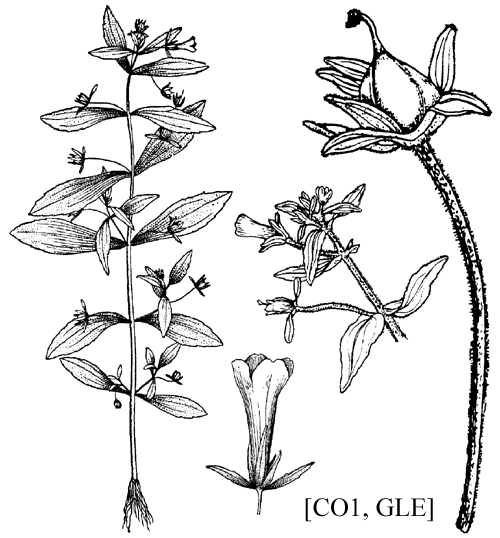
NWI status:
OBL
Shaggy
hedgehyssop (Gratiola pilosa
Michx.)
Native perennial.
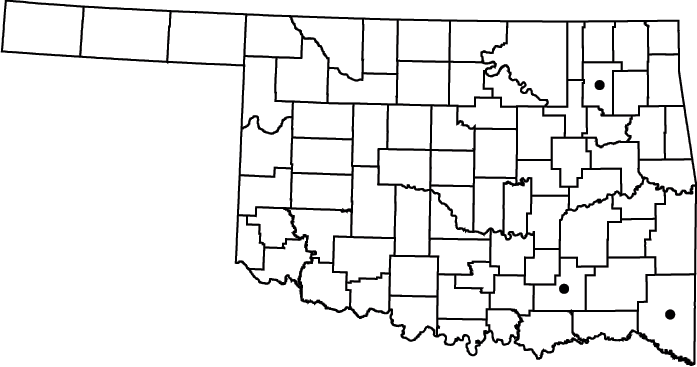
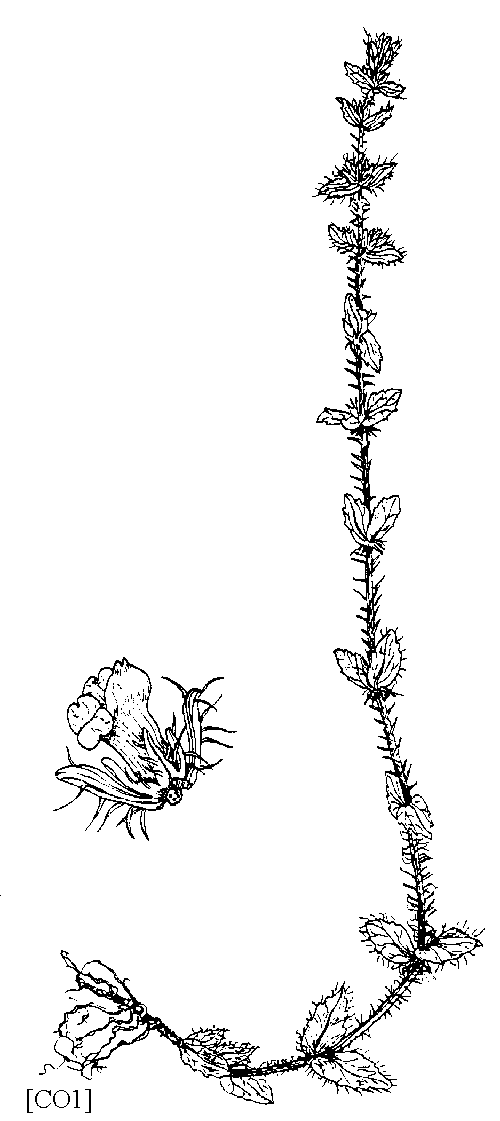
Note: The fruits and flowers of this species are
not on
stalks (sessile or subsessile).
NWI
status: FACW-
Roundfruit
hedgehyssop (Gratiola
virginiana
L.)
Native biennial.
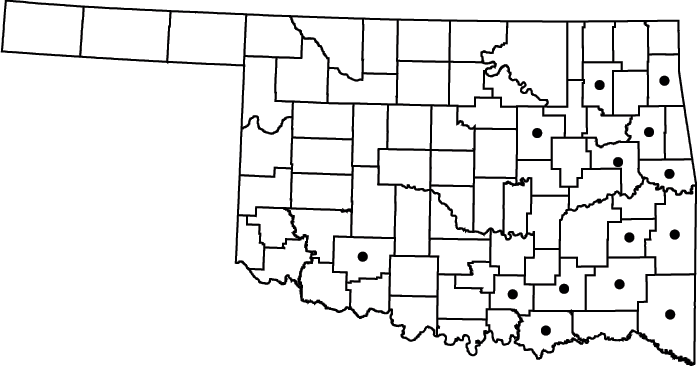
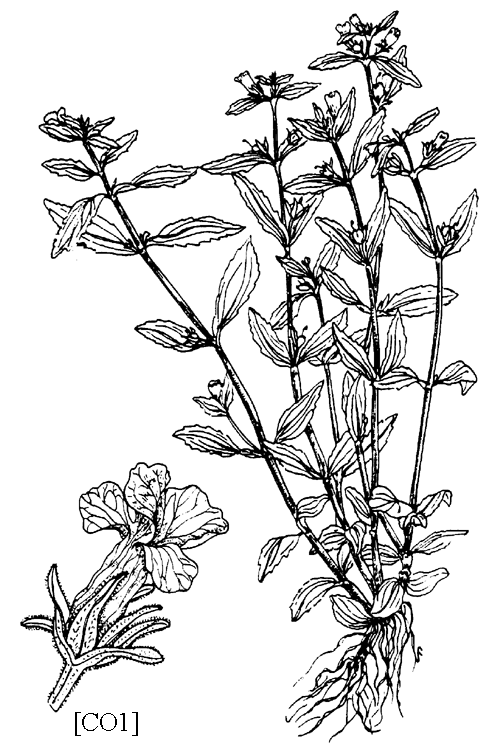
Note: Flower stalks are slender and greater than
10 mm
long.
NWI status:
OBL
Axilflower
(Mecardonia
acuminata (Walt.)
Small)
Native perennial.
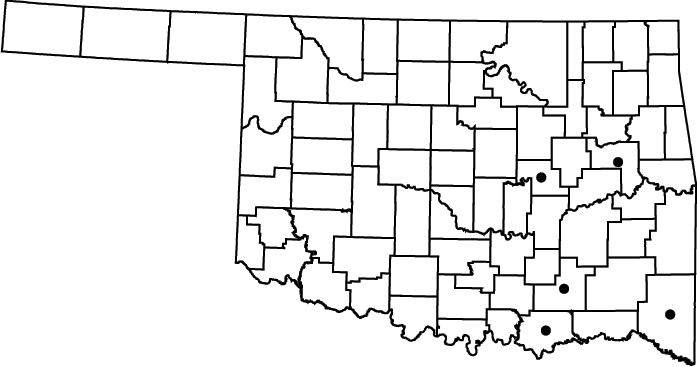
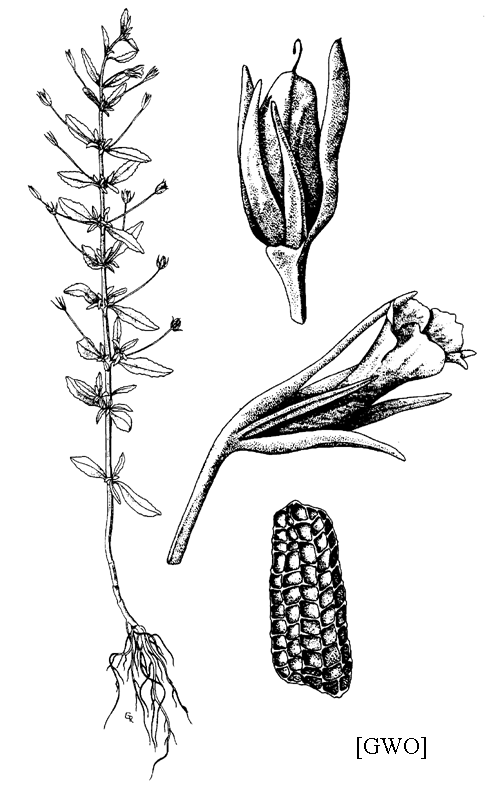
NWI status:
FACW
Last update: 2/18/04
Comments to : Bruce Hoagland
bhoagland@ou.edu
Go to Oklahoma
Biological Survey Home Page
 Disclaimer Disclaimer
|

